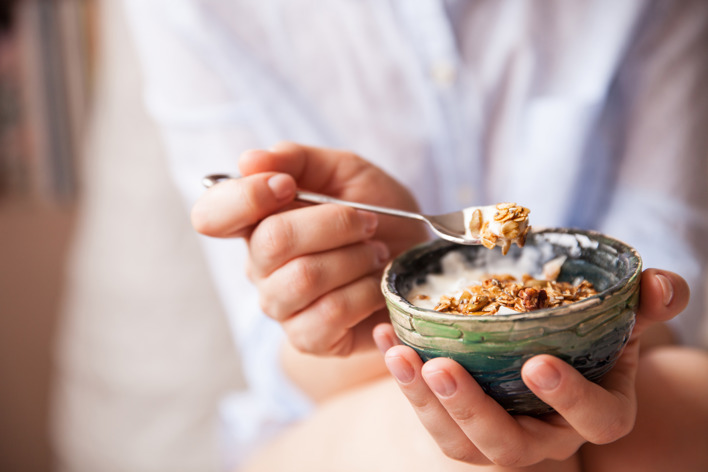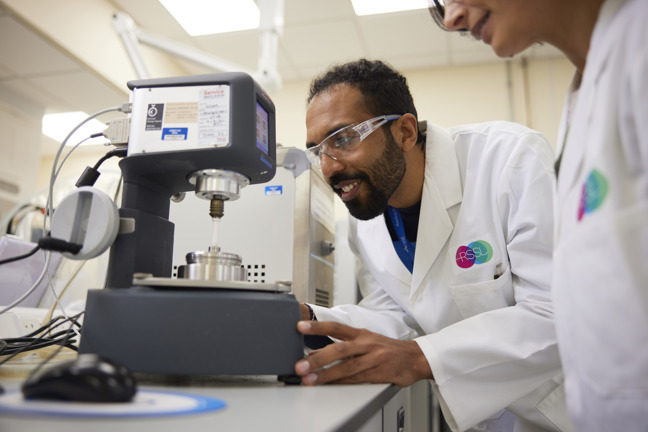Crucially, if differences are detected between prototypes and competitor brands at the start or during shelf-life, microstructural analysis methods can be used to find out why. We can, for example, use specific techniques to visualise the size of fat or water droplets that correlate with the best sensorial profile. Or to pinpoint the reason why prototypes aren’t behaving as expected.
It’s also worth considering the benefits of accelerated instability testing. By fast screening prototypes at the beginning of the NPD process, those that are found to separate quickly can be discarded early on. At RSSL we have the capability to assess instability, including emulsion stability, using a LUMiSizer dispersion analyser. This reduces the number of options we put forward for further testing, cutting your costs and ultimately streamlining time to market.
Supply chain issues are forcing us to change the flour ingredient in our savoury dipping sauce and we want to use this opportunity to explore plant-based and gluten-free options. How can we screen them for robust shelf-life stability?
Making this change will directly impact the viscosity of the dipping sauce, so you need to be sure that protypes made with alternative flour ingredients provide the same consumer experience at every stage of use. How does the dipping sauce look in the jar? What happens when it’s scooped out with a spoon or poured out? How does it behave when used as a dip with vegetables, crisps or breadsticks?
We can answer these questions by developing and carrying out a series of rheological tests designed to characterise the viscosity of each prototype. And then benchmarking the results against the current recipe. What we’re looking for is an optimal texture that performs well in all areas, ideally one that is thick enough to cling to the bread stick or spoon but not so thick that it’s difficult to extract from the jar.
An equally important issue to consider is sedimentation. Over time, some plant-based and gluten-free flours can form undesirable lumps or distinct layers during shelf-life, often due to ingredient incompatibility and interactions. We can identify these so called flocculated or agglomerated materials with specific microscopic techniques, such as Confocal Laser Scanning Microscopy (CLSM). If we go further and use CLSM in conjunction with particle size distribution analysis, we can also determine the scale of the issue and whether layer separation is likely.
Ultimately, flour is an important functional ingredient. Therefore, any change will impact everything from emulsification and stability to mouthfeel and texture, which is why we would also recommend arranging informal sensory testing to provide a detailed description of the texture of each new dipping sauce formulation.
We are developing a vegan royal icing topping, using various vegan alternatives instead of the traditional egg white ingredient, but our prototypes are not performing well. Can you help us understand why?
This is all about investigating viscosity and flow properties – both of which are key to understanding the performance of your vegan royal icing prototypes. We do this by studying the rheology of the vegan icing when first mixed together and immediately after application. At this stage, its structure needs to allow enough initial flow to coat the intended product but without running off. With these test results we can optimise the flow properties by selecting ingredients that will achieve the required level of spreadability.
Once the icing is set, we use a rheological creep measurement to determine how much it could potentially flow or change over time under normal gravity conditions and a penetration test to measure hardness. You essentially want it to be stable, maintain its structure and remain in place during shelf-life. In this case, we would want to know whether the vegan ingredients will provide similar stability and hold as traditional egg white proteins.
Microscopy, specifically Confocal Laser Scanning Microscopy (CLSM), can help us find out because it enables us to see and quantify what happens to the molecular structure of the protein in the vegan icing. Even small changes can significantly affect its functionality so, once identified, we can then resolve any performance issues by making relevant adjustments to the formulation as part of the product development process.

